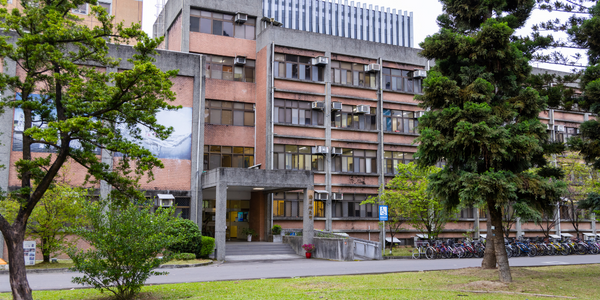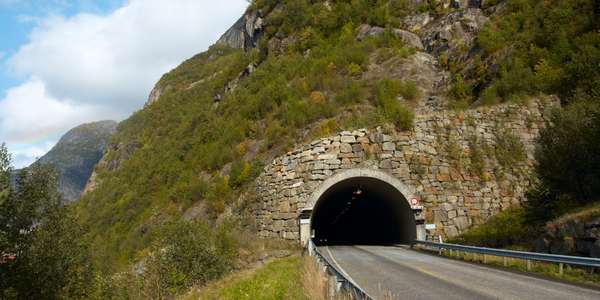Customer Company Size
Large Corporate
Region
- America
Country
- United States
Product
- ICONICS GENESIS32™
- GraphWorX™ HMI Graphical Display Package
- AlarmWorX™ Alarm Management System
- TrendWorX™ Live and Historical Data Logging, Charting and Reporting components
Tech Stack
- OPC-integrated HMI/SCADA
Implementation Scale
- Enterprise-wide Deployment
Impact Metrics
- Productivity Improvements
- Customer Satisfaction
Technology Category
- Application Infrastructure & Middleware - Data Exchange & Integration
Applicable Functions
- Facility Management
Use Cases
- Building Automation & Control
- Building Energy Management
Services
- System Integration
About The Customer
Mohegan Sun is a legendary gaming and entertainment destination created by the Mohegan Tribe of Indians of Connecticut. The facility is renowned for its exceptional service, hospitality, and excitement. It features an extraordinary Mohegan-themed design, making it one of the most unique casinos in the world. The grounds of Mohegan Sun include a 34-story hotel with 1,176 luxury guest rooms, 300,000 square feet of gaming excitement, thirty-two different dining options, over thirty fine shops and boutiques, a performance theatre and arena, and the Sky Dome - the world’s largest, most spectacular planetarium dome, which bathes the casino in an ever-changing display of sparkling constellations.
The Challenge
Mohegan Sun, a renowned gaming and entertainment destination, needed a system to monitor and control the various aspects of their facility. This included the status of chillers, boilers, and other behind-the-scene systems, as well as approximately 250 VAV boxes, about 60 air handling units (AHUs), 30 exhaust fans, a dozen fan coil units, and a host of temperature and humidity readings. An interesting aspect of this project is the AHUs deployed for the arena. There are four fans moving 200,000 cubic feet per minute of air. Normally these are used to air condition the facility for spectators. However, in case of a fire, the smoke detector system puts these AHUs into “Smoke Mode”. Instead of bringing air into the arena, dampers change and these pull the smoke out of the area, making it easier for firefighters to enter the building.
The Solution
Mohegan Sun selected ICONICS GENESIS32™ Web-enabled, OPC-integrated HMI/SCADA suite featuring the GraphWorX™ HMI Graphical Display Package, AlarmWorX™ Alarm Management System and TrendWorX™ Live and Historical Data Logging, Charting and Reporting components. GraphWorX32, a component of GENESIS32, monitors the status of these areas, as well as the chillers, boilers, and other behind-the-scene systems. The custom graphic interface that can be developed by using GraphWorX32 gives more knowledge to the user/operator, thus creating an environment for success. Using this powerful visualization, based on GENESIS32, operators can now visualize the equipment and its operating conditions. The system follows a “Web-based” look and feel, providing users with an instant understanding of how to navigate through the system.
Operational Impact

Case Study missing?
Start adding your own!
Register with your work email and create a new case study profile for your business.
Related Case Studies.

Case Study
Turning A Stadium Into A Smart Building
Honeywell created what it called the “intelligent system” for the National Stadium in Beijing, China, turning the venue for the opening and closing events at the 2008 Summer Olympics into a “smart building.” Designed by highly controversial artist Ai Weiwei, the “Bird’s Nest” remains one of the most impressive feats of stadium architecture in the world. The 250,000 square meter structure housed more than 100,000 athletes and spectators at a time. To accommodate such capacity, China turned to Honeywell’s EBI Integrated Building Management System to create an integrated “intelligent system” for improved building security, safety and energy efficiency.

Case Study
Energy Saving & Power Monitoring System
Recently a university in Taiwan was experiencing dramatic power usage increases due to its growing number of campus buildings and students. Aiming to analyze their power consumption and increase their power efficiency across 52 buildings, the university wanted to build a power management system utilizing web-based hardware and software. With these goals in mind, they contacted Advantech to help them develop their system and provide them with the means to save energy in the years to come.

Case Study
BACnet enabled Wireless Temperature Monitoring System
Client offered a Temperature Monitoring System which consists of Wireless Transmitters and Application Software. Third party BACnet Application such as a Building Automation System needs access to vital parameter such as temperature, humidity, CO2, etc., measured by wireless sensor devices. Client needed a solution to allow data exchange from its Temperature Monitoring System with BMS.

Case Study
IoT System for Tunnel Construction
The Zenitaka Corporation ('Zenitaka') has two major business areas: its architectural business focuses on structures such as government buildings, office buildings, and commercial facilities, while its civil engineering business is targeted at structures such as tunnels, bridges and dams. Within these areas, there presented two issues that have always persisted in regard to the construction of mountain tunnels. These issues are 'improving safety" and "reducing energy consumption". Mountain tunnels construction requires a massive amount of electricity. This is because there are many kinds of electrical equipment being used day and night, including construction machinery, construction lighting, and ventilating fan. Despite this, the amount of power consumption is generally not tightly managed. In many cases, the exact amount of power consumption is only ascertained when the bill from the power company becomes available. Sometimes, corporations install demand-monitoring equipment to help curb the maximum power demanded. However, even in these cases, the devices only allow the total volume of power consumption to be ascertained, or they may issue warnings to prevent the contracted volume of power from being exceeded. In order to tackle the issue of reducing power consumption, it was first necessary to obtain an accurate breakdown of how much power was being used in each particular area. In other words, we needed to be able to visualize the amount of power being consumed. Safety, was also not being managed very rigorously. Even now, tunnel construction sites often use a 'name label' system for managing entry into the work site. Specifically, red labels with white reverse sides that bear the workers' names on both sides are displayed at the tunnel work site entrance. The workers themselves then flip the name label to the appropriate side when entering or exiting from the work site to indicate whether or not they are working inside the tunnel at any given time. If a worker forgets to flip his or her name label when entering or exiting from the tunnel, management cannot be performed effectively. In order to tackle the challenges mentioned above, Zenitaka decided to build a system that could improve the safety of tunnel construction as well as reduce the amount of power consumed. In other words, this new system would facilitate a clear picture of which workers were working in each location at the mountain tunnel construction site, as well as which processes were being carried out at those respective locations at any given time. The system would maintain the safety of all workers while also carefully controlling the electrical equipment to reduce unnecessary power consumption. Having decided on the concept, our next concern was whether there existed any kind of robust hardware that would not break down at the construction work site, that could move freely in response to changes in the working environment, and that could accurately detect workers and vehicles using radio frequency identification (RFID). Given that this system would involve many components that were new to Zenitaka, we decided to enlist the cooperation of E.I.Sol Co., Ltd. ('E.I.Sol') as our joint development partner, as they had provided us with a highly practical proposal.

Case Study
Intelligent Building Automation System and Energy Saving Solution
One of the most difficult problems facing the world is conserving energy in buildings. However, it is not easy to have a cost-effective solution to reduce energy usage in a building. One solution for saving energy is to implement an intelligent building automation system (BAS) which can be controlled according to its schedule. In Indonesia a large university with a five floor building and 22 classrooms wanted to save the amount of energy being used.

Case Study
Powering Smart Home Automation solutions with IoT for Energy conservation
Many industry leaders that offer Smart Energy Management products & solutions face challenges including:How to build a scalable platform that can automatically scale-up to on-board ‘n’ number of Smart home devicesData security, solution availability, and reliability are the other critical factors to deal withHow to create a robust common IoT platform that handles any kind of smart devicesHow to enable data management capabilities that would help in intelligent decision-making






